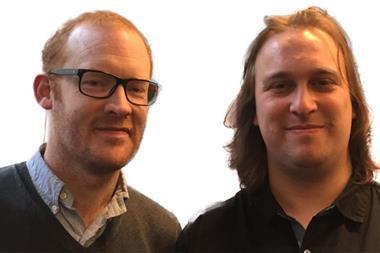Airmic chief executive John Hurrell looks at corporates’ changing insurance needs

How long will insurance remain relevant to large international companies or, for that matter, any enterprise big enough to make the FTSE 250? It may seem a strange question when Airmic members spend at the least £5bn on insurance annually, but let’s ask it anyhow.
It is an important question because the risks that matter most to corporate UK are also the ones that are hardest to insure. Tangible risks such as property account for just 20% of the average risk map, down from 80% 40 years ago, and continuing to shrink.
Our most recent survey of Airmic members showed three risks at the top of the ‘keep awake’ list: reputation, cyber (both first-party and third-party) and contract risks.
These risks were also at the bottom of the insurability list. For example, only 7% of respondents had any sort of cover for reputation damage, and the level of penetration by the insurance market of specific cyber-policies is way below 10% of the potential market.
Power of intangible risks
Talk Talk’s data breach in October 2015 showed the power of intangible risks. It affected 4% of their customers, yet their share price subsequently fell 32%, representing over £600m of shareholder value erosion. This consequential loss would not have been insurable.
Take cyber and business interruption. On cyber, it is easier now to purchase insurance for data loss or theft, albeit the cost is often prohibitive. Loss of business as a result of digital failure, on the other hand, is extremely difficult to cover.
Standard business interruption insurance is relatively easy to acquire, but in practice there are frustrating limitations on the effectiveness of the intangible aspects.
An example would be if there is a terrorist attack at a neighbouring hotel where your own hotel is undamaged but guests are deterred from coming.
Even on tangible risks, the loss adjustment process on major claims can be long and tortuous, involving the provision of information not required for any other purpose.
Traditional products not enough
Looking ahead, we are seeing a pattern of significant disruption of traditional businesses by smaller more innovative companies using disruptive technology, but having little by way of tangible assets. Traditional insurance products will not meet the needs of these new-economy, fast-growing organisations.
It would only be fair to acknowledge that some insurers and brokers have worked hard to provide innovative products to meet the changing needs of their customers, but progress has been limited.
This is largely because the intangible risks in question are hard to model and the potential losses enormous as high-value functions are increasingly concentrated and connected. Covering these exposures within a Solvency II risk framework demanding a high level of data-driven technical underwriting is extremely challenging.
Failure not an option
Nonetheless, I am sure we can succeed – and we must, or else insurance will steadily disappear to the fringes of most corporations’ risk maps.
All the main recent gains achieved by the insurance market have been the result of buyers, underwriters and brokers working together to address sometimes apparently intractable problems. And this has to be the way forward.
Solving these problems is proving to be an iterative process. Buyers can contribute by giving underwriters a deep and detailed understanding of their risks and educating their boards on the value of treating insurance as a strategic purchase.
For their part, we would like insurers to be a bit more adventurous and to go the extra mile to produce policies that provide the clarity and certainty of cover that give risk managers a justification to increase their insurance spend.






































No comments yet